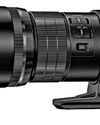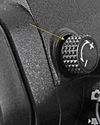
From the simplest point and shoot to the most advanced DSLR (or an MLC) there is probably no camera in the world without some form of exposure compensation control. This is perhaps the most extensively used feature by all advanced photographers. Yet it can be tricky to understand how exactly it operates. This article aims to go deep into this feature and help readers get a comprehensive understanding. Let us start by recalling a few fundamentals.
To begin, exposure is the right ‘dosage’ of light to create an image with the maximum number of tones recorded. The job of the exposure is to control the light falling on the sensor and thus bring it within the recording range. This is very similar to the way how iris in our eyes regulates the light reaching the retina. Exposure can be considered to have three components - Shutter speed, Aperture, and ISO. Though it is often mentioned that these three form the so-called ‘exposure triangle’ (Picture 1) there is a difference in the way they behave. The first two together, either individually or together regulate the amount of light that reaches the sensor. The ISO on the other hand is an electronic function that defines the amount of light needed to make a proper exposure, with higher ISO values needing less light. There is also a mistaken notion that ISO changes the sensitivity of the sensor. It does not as that is fixed once the sensor is made. Increasing the ISO in your camera essentially enhances the gain of the internal amplifiers thus making the signal from the sensor stronger with the adverse side effects of increased noise and reduced dynamic range.
この記事は Smart Photography の May 2023 版に掲載されています。
7 日間の Magzter GOLD 無料トライアルを開始して、何千もの厳選されたプレミアム ストーリー、9,000 以上の雑誌や新聞にアクセスしてください。
すでに購読者です ? サインイン
この記事は Smart Photography の May 2023 版に掲載されています。
7 日間の Magzter GOLD 無料トライアルを開始して、何千もの厳選されたプレミアム ストーリー、9,000 以上の雑誌や新聞にアクセスしてください。
すでに購読者です? サインイン

SELECTING THE RIGHT SYSTEM
Buying a new mirrorless camera can be a daunting decision. Not only are cameras very expensive, but also choosing a brand with an exclusive mount can mean locking yourself into a system.

Capturing Momenta Folding Boundaries
With the Pixel 9 Pro Fold, Google takes cues from its impressive line-up of Pixel smartphones and resolves some of the design oddities we’ve seen on foldable smartphones from more seasoned competitors in the category.

Super Sharp
Smart Photography reviewed the OM System OM 1 Mark II camera last month. If you haven’t read the review, please do so.

HIDDEN FEATURES OF YOUR CAMERA
Ashok Kandimalla has been in the photographic field for over three decades and has extensive experience in both film and digital photography.

Hahnemühle Hemp Paper at Olympics & Paralympics 2024
As the 2024 Paris Olympics and Paralympics embraced sustainability, Hahnemühle’s Digital FineArt Hemp paper played a central role as the exclusive medium for the official Premium Posters. This eco-friendly, plant-based paper aligned with the Games’ commitment to sustainability and delivered exceptional print quality. From limited-edition posters to the Artistic Posters Programme, Hahnemühle’s innovative use of hemp fibres showcased how high-value print products continue to thrive in a rapidly digitizing world.

The Lasting Power of Print: Preserving Memories Through Photobooks
I am a software engineer turned photographer, and my journey in photography has been a constant companion throughout my life.

The Wildlife of Eastern Mongolian Steppe
Mohit Ghatak is an engineer and a management postgraduate and works as a regional business leader in Singapore.

Abhishek Dey's Photo World
I identify myself more as a travel photographer than a purely landscape photographer.

Manfrotto lithium ion batteries for cameras
Manfrotto has introduced its new MKII lithium-ion batteries, featuring a higher capacity of 2400mAh for Nikon, Sony, Canon, Fuji, and OM System cameras.

Canon to have EOS C80 with enhanced features
Canon announced the launch of its latest Cinema EOS camera, the EOS C80, just ahead of the International Broadcasting Convention (IBC) 2024.